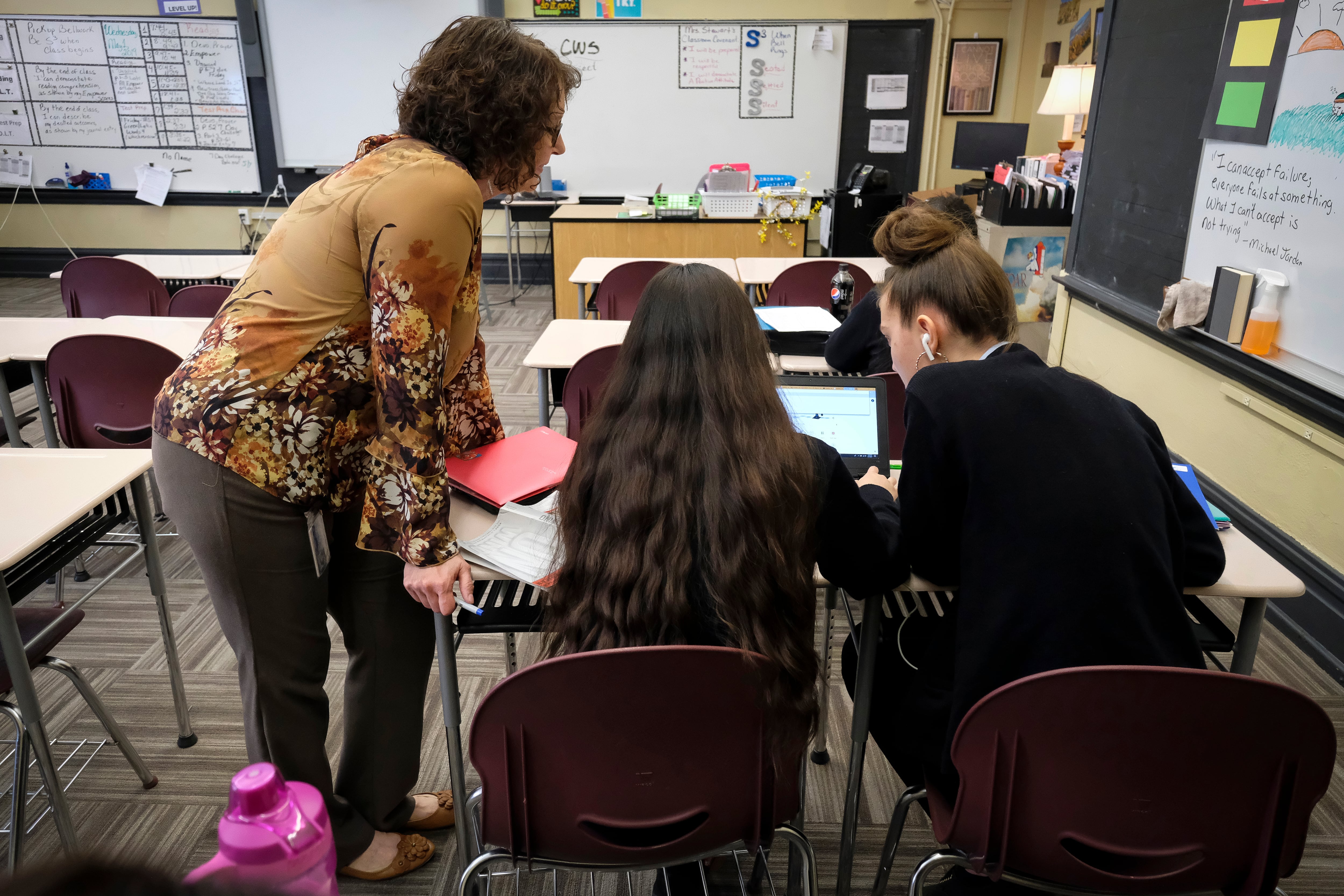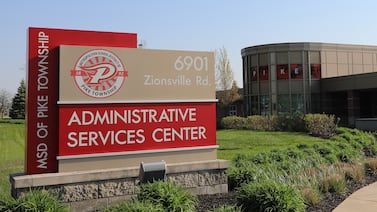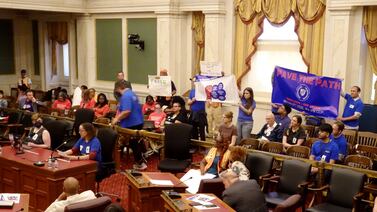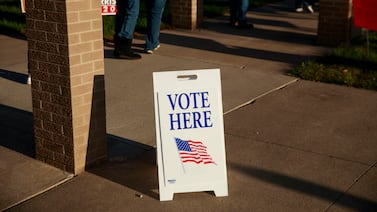Coming from a low-income family, Annabella McGinley-King thought Indiana’s 21st Century Scholars program would enable her to afford college.
In middle school, she enrolled in the state-run program, which covers the equivalent of public school tuition at Indiana colleges and universities for eligible low-income students. Like many other students who have enrolled since 1990, McGinley-King was tripped up by the requirements imposed on recipients.
While over 45,000 Hoosiers have received credentials or degrees from the scholarship, according to a 2021 report from the Indiana Commission of Higher Education, recent data indicates that the majority of students struggle to meet the requirements for 21st Century Scholars through high school.
Statewide for the class of 2023, 39% of scholars completed their ninth grade activities, and 7% completed all of the high school requirements by October 2022, according to commission data. The proportion has declined since the start of the pandemic.
To boost those figures and to reverse a decline in college-going among young Hoosiers, Indiana officials are retooling it.
21st Century Scholars must pledge to reach academic and other goals in both high school and college. McGinley-King completed all of the high school requirements, and enrolled at Holy Cross College in northern Indiana, after graduating from Cathedral High School in Indianapolis in 2021.
Following multiple deaths in her family and encountering difficulty adjusting to the school environment, she dropped some classes to avoid failing. But she worried about not meeting the scholarship’s credit threshold. After three semesters, McGinley-King left Holy Cross. Because she was no longer an active student, she lost her scholarship.
Ultimately, the requirements of 21st Century Scholars were too inflexible for her.
“College was the worst I’ve ever done in school,” said McGinley-King, who had always done well in high school. “I’ve just been burnt out for a really long time. Even though I knew what the requirements were, it just wasn’t going to work out.”
Her story illustrates the challenges as Indiana policymakers and educators try to reverse declining college-going rates and to ensure more students benefit from 21st Century Scholars. The state passed a law in May to automatically enroll eligible students at the end of their eighth grade year (they may opt out).
YeVonne Jones manages KIPP Forward, which supports KIPP students and alumni in colleges and careers. A former middle school counselor, she recalled how difficult it was to enroll students.
She always worried, “What happens once they get to high school?”
How enrolled students can access the scholarship
The new law enables educators and others to focus on helping students complete program requirements. But while the law makes enrollment easier, it doesn’t address the challenges of meeting the scholarship’s high school and college requirements.
In order to access the scholarship, enrolled high school students must participate in an extracurricular activity as freshmen, gain workplace experience as sophomores, visit a college campus as juniors, and file the federal student aid application, known as the FAFSA, as seniors, among other requirements.
Although the program lays out annual expectations, it allows students to complete them in any of their high school years.
They can track their progress using an online program called ScholarTrack. But getting personal support is critical, and not all high schools have a counselor available to help, said Berenice Tenorio, an outreach coordinator for 21st Century Scholars at the state’s Commission for Higher Education.
“The commission recommends that counselors meet with their scholars every single year to go over their requirements,” Tenorio said. “But we know that’s not always the case.”
To help, the commission connects with organizations like Starfish Initiative, which offers mentoring and helps students meet the scholarship requirements, by providing opportunities for community service and college tours.
Keeping students on track is a priority, said Starfish Initiative’s Director of Programs Latrice Watson.
“Most students will procrastinate until they have to do something, which is usually at their senior year,” she said. “But it’s getting a lot better.”
Maintaining 21st Century Scholar status throughout college
To keep their scholarship, students must maintain Satisfactory Academic Progress per their college or university, earn 30 or more credit hours per academic year, and file their FAFSA annually. There is also another set of requirements called the College Scholar Success Program, first imposed in fall 2020, that have been paused.
Some campuses, like Indiana University Bloomington, have staff devoted to supporting 21st Century Scholars.
“If a student loses that scholarship, that’s pretty much the end of their pursuit of a degree,” said Vincent Isom, the director of the school’s 21st Century Scholars program. “So it’s important for us to have holistic support for the students, not only the academic piece and not only the career preparation piece, which serves as the motivation for the students to stay on track.”
A student can lose their scholarship if their GPA dips below the requirement, they’ve failed to fulfill the necessary credit hours or haven’t completed their FAFSA. They can appeal if they’re still attending classes and can show extenuating circumstances.
To help, IU’s 21st Century Scholars office hosts study tables Monday through Friday, required for students on academic probation and recommended for students at risk.
He said the office will reevaluate the resources offered as more students may use the scholarship under the new law.
As for McGinley-King, she is working full time to save money to go back to school. She wants scholars to know that it’s OK not to jump into college or university immediately. Scholars have up to one year after high school to start using their scholarship. She advises taking a gap year.
“You have conditions, and you have to meet them, and it kind of sucks sometimes,” she said. “But if you take the time for yourself to figure out what is truly best for you, that’s way more helpful than being in it and being stressed about it.”
Correction: A previous version of this article incorrectly listed the GPA required for 21st Century Scholars. It has also been corrected to clarify the requirements for 21st Century Scholars while in college and the requirements for study tables at IU.
Jade Thomas is a summer reporting intern covering education in the Indianapolis area. Contact Jade at jthomas@chalkbeat.org.








